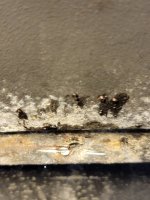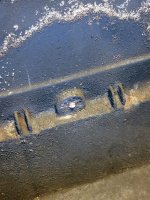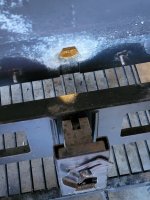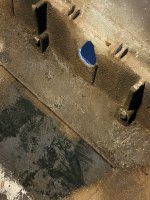Val, I do it this way to save time. If I was working on a grill and didn't have spare parts, like an extra cook box laying around, I wouldn't do this or at least would get as aggressive doing it this way. BUt I have done a good 200 Silver B and Genesis 1000 cook boxes and I would say 40% have a had a frozen cook box bolt. So probably out of those 75 or 80 cook boxes that I have done this to, I remember only one or maybe two cracking.
Having done this so many times, I have refined my technique from just whacking away willy nilly to setting it up properly and using a bit of finesse. First is to ensure you have good support directly under the frozen bolt. That will ensure a solid strike and keep the cook box wall from flexing any more than necessary. Then you can go after the bolt. But, always try to twist off or cut off the bolt so that some sticks out from the cook box. That way you can tap/hit it side to side all around instead of just hitting straight down on it. The side to side hitting will help break the corrosion that is holding the bolt in. It also doesn't cause the cook box wall to flex like straight punching will do. But, if you don't have any of the bolt to go side to side with, you will just have to punch. Many small to medium hits are the key. It will slowly break up the corrosion kind of like a hammer drill or jack hammer. If that doesn't work, then increase the aggressiveness using a regular hammer. If that still doesn't work, then you are looking for a 2lb maul and that is where you will increase your chances of cracking the cook box wall. But, as I said, I get almost all mine out this way.
When I first started doing rehabs, I did drill them out. But after a while, it got tedious and the hammer kept barking at me.
I should do a video on this, but every cook box is a little different. Some take two or three hits and it is done, some take 20 hits or even more. Besides, I never remember when I am in the process of doing rehab and find a frozen cook box bolt.
So, I will just tell you my experience and also tell you that if you try this method, you do so at your own risk. Hopefully it winds up more reward than risk.
Oh, one other disclaimer. Wear hearing protection. It is like whacking a bell with your head inside.




